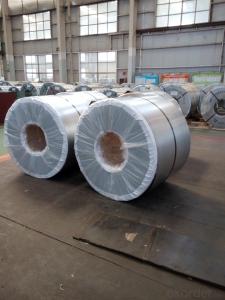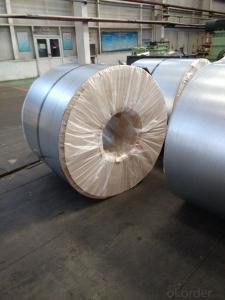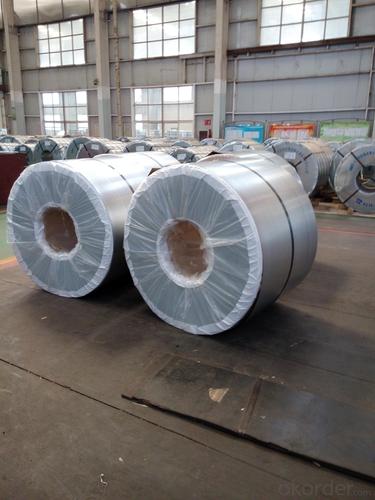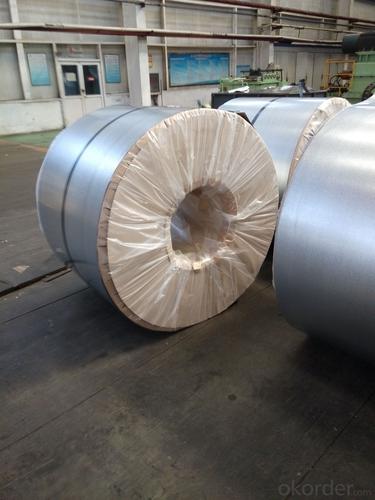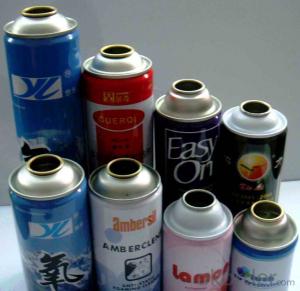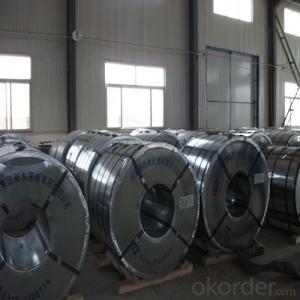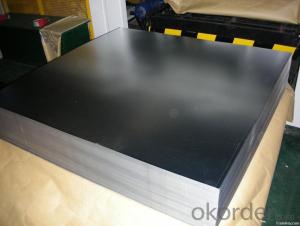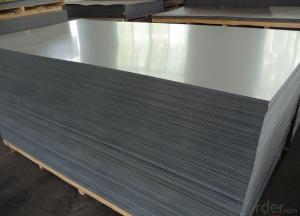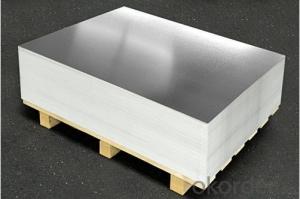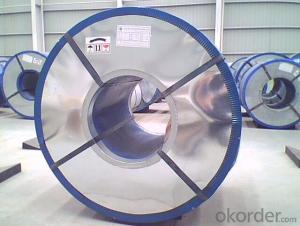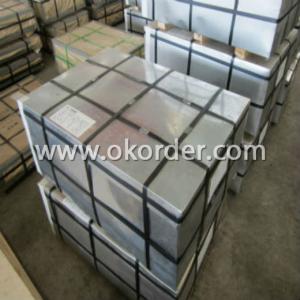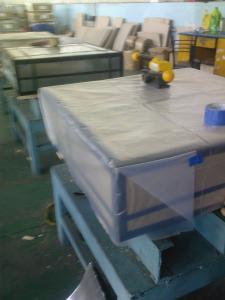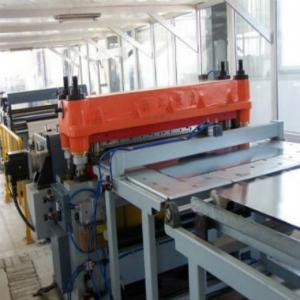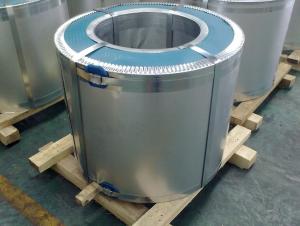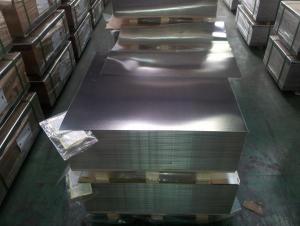Electrolytic Tinplate for Useage of Industrial Package
- Loading Port:
- Tianjin
- Payment Terms:
- TT OR LC
- Min Order Qty:
- 50 m.t.
- Supply Capability:
- 30000 m.t./month
OKorder Service Pledge
OKorder Financial Service
You Might Also Like
Specification
1.Structure of Electrolytic Tinplate for Useage of Industrial Package Description
Electrolytic Tinplate undoubtedly enjoys the pride of place as a packaging medium especially for food. It owes its unique position to its "nine layer sandwich structure", each of which contributes to its eminence as a packing material. The steel base of electrolytic tinplate provides the necessary strength and formability for can fabrication. The tin-iron alloy layer provides the bond between the steel and free tin layer. The free tin layer is not only responsible for the attractive bright finish and ease of solderability but is also non-toxic- a factor of vital importance in food packaging!
2.Main Features of the Electrolytic Tinplate for Useage of Industrial Package
The origin of tinplate is from Bohemian, from 14th century, the people there began to produce tinplate. Also known as electrolytic tinplate, which stand for tin coating on the surface of cold rolled coil for preventing rust. The unique characteristics of tinplate steel decides its comprehensive range of application in international tinplate packaging industry. With the abundance extend of CC and DR steel material, and tin free steel, which enhance the development of technology of packaging industrialization, the innovation is ubiquitous in tinplate steel.
The feature of anti-oxidation, various kinds and beauty in printing enable tinplate enjoys widely usage in food can package, pharmaceutical package, daily application packing, apparatus package and industrial pack.
From the first food can to be produced in the year of 1810 in British, the development trend of tinplate has become thinner thickness and less tin coating to adjust the change of can industry and save cost.
3.Electrolytic Tinplate for Useage of Industrial Package Images
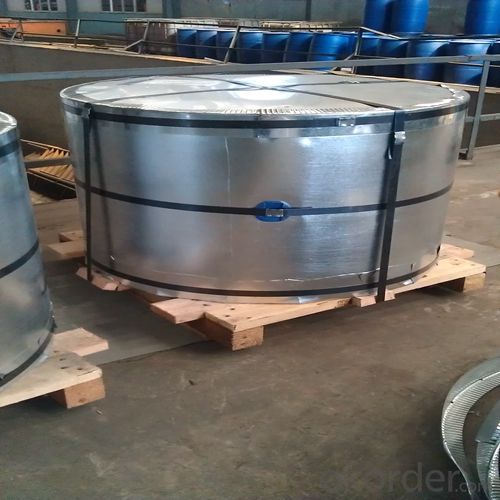
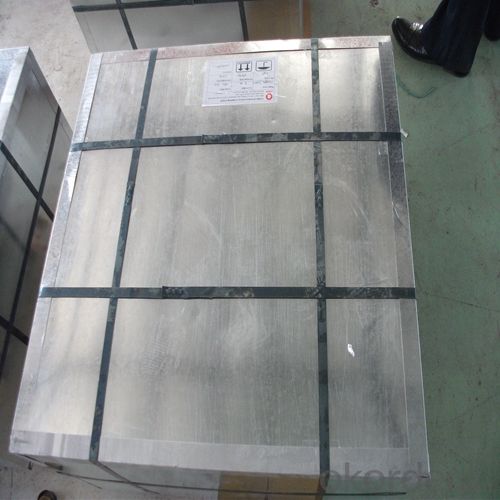
4.Electrolytic Tinplate for Useage of Industrial Package Specification
Specification of :
Standard: ISO 11949 -1995, GB/T2520-2000,JIS G3303,ASTM A623, BS EN 10202
Material: MR,SPCC
Thickness:0.15mm - 0.50mm
Width: 600mm -1150mm
Temper: T1-T5
Annealing: BA & CA
Coil Inner Diameter: 508mm
Weight: 6-10 tons/coil 1~1.7 tons/sheets bundle
Passivation:311
Oil: DOS
Surface: Finish,bright,stone,matte,silver
5.FAQ of Electrolytic Tinplate for Useage of Industrial Package
- What is tinning and how does it work?
Tinning is the process of thinly coating sheets of wrought iron or steel with tin, and the resulting product is known as tinplate. It is most often used to prevent rust.
- Do you only have prime quality tinplate?
We can supply both prime and second quality tinplate.
- Q: Can tinplate be used for automotive components?
- Yes, tinplate can be used for automotive components. Tinplate is a type of steel coated with a thin layer of tin, which provides corrosion resistance and aesthetic appeal. It is commonly used in the automotive industry for various components such as fuel tanks, oil pans, and engine covers.
- Q: What are the main applications of tinplate in the textile industry?
- Tinplate is commonly used in the textile industry for applications such as canning and packaging of textile products. It provides a protective and decorative coating that enhances the visual appeal and durability of the packaging materials. Additionally, tinplate is also utilized for manufacturing sewing machine needles and other textile machinery components, as it offers excellent corrosion resistance and strength properties.
- Q: What is the tensile strength of tinplate?
- The tensile strength of tinplate typically ranges from 28,000 to 40,000 pounds per square inch (psi), depending on the specific grade and thickness of the tinplate.
- Q: How to prevent the corrosion of tinplate wall hydrogen sulfide blackening, expansion
- Oil pipelines and oil storage containers buried in the ground are exposed to the water, salt, alkali and acid substances directly in the soil, and they should be coated with antirust paint on the outside surface, and then sprayed with asphalt protection layer.
- Q: Can tinplate be used for packaging pet care products?
- Yes, tinplate can be used for packaging pet care products. Tinplate is a durable and lightweight material that provides good protection against moisture, ensuring the quality and safety of pet care products. Additionally, tinplate can be easily shaped and decorated, making it an ideal choice for attractive and functional packaging.
- Q: What are the main growth drivers for the tinplate industry?
- The main growth drivers for the tinplate industry include increasing demand from the packaging sector, particularly for food and beverages, as tinplate offers excellent preservation properties. Additionally, the growing popularity of eco-friendly packaging solutions and the rise in disposable income in emerging economies are contributing to the industry's expansion. Furthermore, advancements in manufacturing technologies and the development of innovative tinplate products are driving the growth of the industry.
- Q: What are the common forms of corrosion that affect tinplate?
- The common forms of corrosion that affect tinplate include uniform corrosion, pitting corrosion, and crevice corrosion.
- Q: Can tinplate be used for paint can packaging?
- Yes, tinplate can be used for paint can packaging. Tinplate is a widely used material for packaging due to its durability and ability to protect the contents from external factors. It is commonly used for paint can packaging as it provides a strong barrier against moisture and corrosion, ensuring the paint remains in good condition. Additionally, tinplate is easily recyclable, making it an environmentally friendly choice for packaging.
- Q: How does the printing process affect the durability of tinplate?
- The printing process can significantly affect the durability of tinplate. The printing ink used can provide a protective layer that helps prevent corrosion and enhance the tinplate's resistance to external factors such as moisture and abrasion. Additionally, the printing process can also impact the adhesion of the coating on the tinplate, which can further improve its durability.
- Q: How does tinplate affect the overall weight of packaging?
- Tinplate generally adds weight to packaging due to its metal composition, which can increase the overall weight of the packaging material.
Send your message to us
Electrolytic Tinplate for Useage of Industrial Package
- Loading Port:
- Tianjin
- Payment Terms:
- TT OR LC
- Min Order Qty:
- 50 m.t.
- Supply Capability:
- 30000 m.t./month
OKorder Service Pledge
OKorder Financial Service
Similar products
Hot products
Hot Searches
Related keywords
